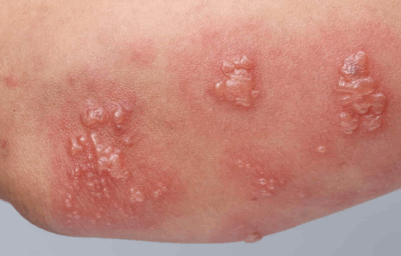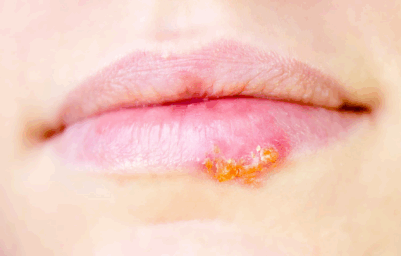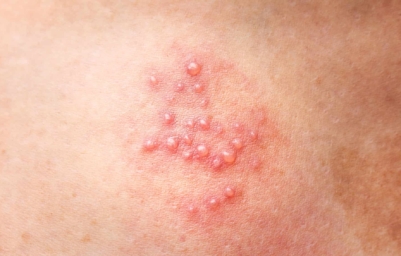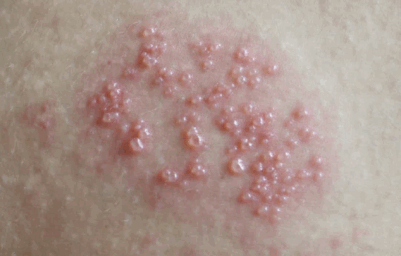Yes, other rashes can be mistaken for herpes. A test or a visual examination from a doctor or pharmacist can help to identify herpes sores.
Contact dermatitis
Contact dermatitis causes red, itchy, blisters like herpes lesions on the skin. It usually occurs after contact with an irritant such as medication, plants, jewelry, and cosmetics. They can recur just like herpes.
Pimples
Pimples can have a similar appearance to sores brought on by herpes on the face. However, herpes spots usually appear in clusters, are more painful, and will usually appear after tingling to the area. Herpes spots are also usually more aggressive than pimples.
Scabies
A herpes rash on the body and scabies can cause skin irritation. Herpes on the thigh or herpes on the arm, could be mistaken for scabies, as it tends to affect the legs, arms, and hands. A common symptom of scabies is severe itching that occurs mainly at night. This is a telltale sign of scabies. Scabies pimples are also not likely to appear in bunched clusters, and unlike herpes, the rash is not likely to fill with fluid and burst.
Jock itch
Jock itch is a fungal infection, causing a red and itchy rash in warm and moist areas of the body. It is common in athletes or people who sweat a lot and often affects the groin and inner thighs. Herpes is itchy and can feel like a burning sensation on the skin which can also occur in Jock Itch, although the rash which shows with Jock Itch tends to have a distinctive ring shape.
Genital warts
Genital warts are a common sexually transmitted infection. Small, flesh-colored bumps affect the moist tissues of the genital area and have a cauliflower-like appearance. They primarily effect the vagina and penis but like the herpes rash, they can also develop in the mouth or throat.
Shaving rash
Shaving rash is a form of irritant contact dermatitis, which occurs when the skin is irritated by shaving. It can look like herpes on legs because the symptoms are similar. Redness, itching and tenderness usually occur in the affected area, however shaving rash is usually a temporary condition which clears over time.
Shingles
Shingles may be confused with the HSV rash because it causes a tingling or painful feeling in an area of skin with a rash will appear a few days later. The shingles rash differs to the herpes virus because it usually only affects one side of the body.
Other STIs
Gonorrhoea, chlamydia and syphilis can all cause genital sores which can look and feel like herpes lesions on skin, so it is important to get tested by a medical professional as soon as symptoms show.







